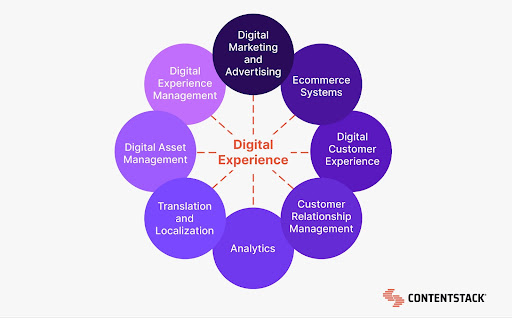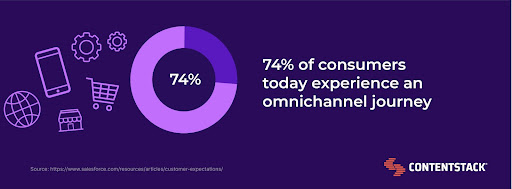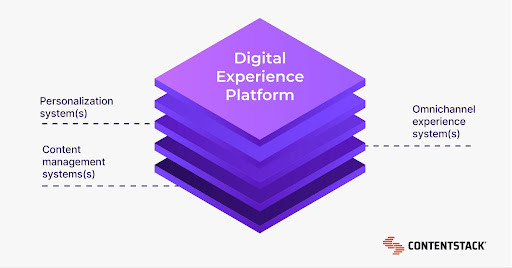The essential digital experience primer
The introduction of digital channels has changed how consumers and businesses interact.
The majority of today’s consumers find the experience a brand provides vastly important — and they’re especially interested in seeing more effective digital experiences in light of COVID-19.
Consumers already interact digitally at every stage of the buying journey, from researching solutions to learning more about specific brands, acquiring and consuming a product or service, and seeking out support for their purchase after the fact.
Is your experience meeting consumers on their preferred digital channels?
This article will help you become familiar with the key facets of the digital experience so you can better deliver on shoppers’ desires. Once you’ve completed this primer, we encourage you to check out our other content, where we cover many of these key concepts in greater detail.
What is digital experience?
The digital experience is the sum of all interactions between consumers and businesses that take place via digital channels and devices.
Consumers may encounter these experiences when interacting with a business’ website or ecommerce platform, social media channels, digital advertisements and marketing campaigns, and anywhere else the business is active online.
Businesses can use many different tools in tandem to deliver cohesive and relevant digital experiences to the consumer throughout their buying journey. Some of these include digital asset management (DAM) software, a customer relationship management (CRM) tool, an analytics platform, a digital experience platform (DXP), and beyond.

Speaking of bringing different elements together to create a seamless experience, here are some key philosophies and technologies anyone studying the digital experience should know about.
Digital experience management (DXM)
Digital experience management (DXM) is the practice of wrangling and controlling the various parts that make up the digital experience. It’s a broad term for a broad practice, but the experience you’re creating should create easy and personalized interactions for consumers. Findings from Boston Consulting Group indicate there’s a massive opportunity for ROI and top-line growth for businesses that make a healthy shift toward personalized offers.
Digital experience platform (DXP)
The process of digital experience management requires monitoring several tools, such as a DAM, a CRM, and more.
To create an efficient DXM workflow, it can be helpful to bring these tools together in one place: a digital experience platform (DXP). A DXP can be a product or a concept. Some software providers build and sell digital experience platforms. However, a DXP can also be your collection of integrated tools that comprise your digital experiences.
For example, you can build a DXP by integrating your experience tools into an agile, headless content management system (CMS). This piece of software is highly composable and flexible thanks to its modular architecture. Key experience tools are relatively easy to plug in, update, and even swap out as business needs change and scale.
See digital customer experience in action
When McDonald’s realized that simply serving their fast food faster wasn’t exactly the interaction consumers were looking for, they asked their customers where the experience was falling short of expectations.
They learned that their restaurants needed to focus on improving the customer experience in-store, at the drive-thru, and even during the home delivery process. So now, McDonald’s is in the process of making many customer experience touchpoints digital. They’re rolling out digital in-store kiosks to provide self-service options, implementing automation at drive-thrus to increase convenience, and have added personalization technology to their mobile app to make each digital experience relevant.
Customers don’t necessarily care which or how many digital elements you roll out; they only care that the digital experience you offer meets these main requirements: it empowers them to complete their task, it is as easy as they are expecting it to be, and the experience itself is pleasant.

Key benefits of prioritizing the digital experience
Focusing on the digital customer experience isn’t only about improving the customer journey; a better digital experience is also better for your business.
Reap the rewards of real-time personalization
Personalization is, to quote Salesforce’s 2020 State of the Connected Customer report, “ubiquitous” among consumers. And these same consumers expect almost immediate engagement when interacting with brands.
The only scalable way to create relevant, real-time consumer interactions like these is to tap into the automation and artificial intelligence that digital experience platforms bring to the table. Brands making an effort to prioritize a personalized digital experience can expect increased sales, retention, and forgiveness during those times when the buying journey does go askew.
Differentiate yourself with an omnichannel customer journey
Consumers use more channels and devices to complete purchases than they used to. In fact, they seek out specific channels depending on the context of the transaction. Across these different channels and devices, it’s no surprise that consumers desire consistency in interactions. Unfortunately, they typically aren’t getting that.
The majority of consumers find themselves experiencing disjointed interactions, repeating the same information, and feeling “treated like a number.” This presents your organization with a huge opportunity to differentiate yourself by providing a digital experience that cares about and caters to the individual consumer across every touchpoint.

Digital customer experience a gateway to digital transformation
Digital transformation is the practice of injecting digital technologies and workflows into your business to modernize your internal operations, your products or services, and how you interact with consumers.
Digitally transformed businesses are better prepared to keep up with shifting customer journeys and desires, ready to compete in an economic environment that changes quickly, and able to improve operational productivity through smarter tools and communication processes. However, digital transformation is a huge undertaking that most businesses can’t spend the money or time tackling all at once. Transforming just the customer experience by integrating new digital channels and tools is a relatively approachable way to begin your digital transformation, while still reaping all the aforementioned benefits that result from improved experiences.
What’s the catch when it comes to creating digital experiences?
Like with any business process, businesses should take important considerations into account when thinking about building a modern digital experience.
Digital experiences might not work for every customer type
Some audiences simply do not prefer and won’t participate in fully digital consumer experiences, possibly because of their demographics (older consumers, etc.) or because of the type of business you’re in (the highly sensitive financial industry, etc.). So if you’re seriously considering investing in digital experiences but aren’t sure your audience will be on board, connect with them first to confirm or deny your suspicions.
Requires you to outlay some amount of time and money
Digitalizing your customer experience is no small feat. Aside from the monetary cost of acquiring cutting-edge experience tools and platforms, there’s also the time workers will spend implementing this new tech, managing the internal and external shift to digital processes, and keeping everything running smoothly. Real investments of time and money have to be made to create effective digital experiences.
Who’s standing by if the digital experience fails?
One of the downsides of a digital experience is that consumers are left without a way to complete their task or solve their issue if it doesn’t go off without a hitch. If you’ve ever had a conversation with a poorly built chatbot, you know the kind of interaction we’re talking about.
This failure point is why many digital experiences, such as chatbot programs, have a failsafe built in where consumers can connect to a human support agent if needed. Your organization needs to have both staff and systems in place to quickly provide a human element if a breakdown happens in the digital experience.
3 Steps to creating a seamless digital experience
If you’re ready to create or improve the digital experiences your organization delivers, then follow along as we dive deeper into the process of building a DXP.
1. Pick your composable platform
The first step in uniting the technology that will become your DXP is choosing the software platform that will enable it to work together. We believe that no single vendor can offer the full spectrum of features you’ll need to create great experiences both now and in the future. That’s why earlier we recommended you start with an integration-forward platform, such as a headless CMS.
Why a headless CMS, specifically? Because a modern CMS will already have many of the inherent personalization and omnichannel delivery features you need to create and serve the content that powers every great digital experience.
2. Choose and integrate your experience software
DXPs are only as capable as the software you bring together to create them. The specific tools you choose will depend on factors such as your team size, budget, business goals, and so on. Here are the main types of tech to consider including:
- Ecommerce management
- Product information management
- Recommendation engine
- Customer relationship management
- Customer data management
- On- and off-site analytics
- Marketing funnel automation
- Translation and/or localization
- Digital asset management
- Advertising management
- Enterprise resource planning
For recommendations on specific vendors in some of the above categories, read our 4-Step Roadmap to Achieving Hyper-Personalization.

3. Create and deliver digital experiences
Now you’re prepared to use your DXP to create and deliver personalized, omnichannel digital experiences.
Here we again come back to why a headless CMS should be the underlying platform for your DXP. Headless CMS is unique in that the back-end functionality layer is separate from the front-end presentation layer. These elements work together via application programming interface (API) technology. This loose coupling is what’s called modular architecture. Modular architecture plus API connectivity make it so other modular applications — CRMs, DAMs, etc. — can be integrated right into the content creation and delivery process to inform personalization, omnichannel publishing, and more.
Keep exploring the digital experience essentials
With this primer finished, you’re set to dig deeper into the essential elements of the digital experience. Keep reading to learn about the ins and outs of the DXP, the omnichannel approach, and even how to calculate ROI when it comes to putting time and money into a new digital experience.
